The book series not only ensures scientificity and inherits the current program, but also creates favorable conditions for teachers to teach and students to study effectively, while serving as a foundation for testing, evaluating and developing comprehensive capacity.
Need to be based on current program platform
Mr. Dinh Van Trinh - Principal of Nguyen Hien Secondary School (Tan Thoi Hiep, HCMC), said that a set of shared textbooks needs to meet a number of core requirements.
First of all, the book series must have clear regulations on the order of chapters and lessons, ensuring full basic knowledge according to the general education program, serving as a foundation for building general tests and exams; thereby promoting the capacity and qualities of learners. In addition, the book must have full examples and illustrative exercises, helping teachers have standards for teaching and students can self-study effectively.
According to Mr. Dinh Van Trinh, one of the key requirements is that the book series must be compiled scientifically, balanced in terms of duration and suitable for the psychology of the age group. It is impossible to combine the content from many existing book series into one common series, but it needs to be redesigned, ensuring enough time for each lesson, including the review of old lessons, receiving new knowledge and applying. In particular, there needs to be direct participation of teachers in the book compilation council. They are the ones who understand students' psychology, receptivity and effective teaching methods.
After a cycle of implementing the 2018 General Education Program, teachers have become accustomed to following the framework program issued by the Ministry of Education and Training ; gradually adapting to the new program, clearly understanding the structure, content orientation as well as appropriate teaching methods. Therefore, Mr. Dinh Van Trinh said that when compiling a set of common textbooks, it is necessary to ensure inheritance, consistency of knowledge flow and suitability with teaching and learning practices.
Inheritance is reflected in maintaining the flow of knowledge, the goals to be achieved, the system of core competencies and qualities, as well as the modern educational perspectives that the program has proposed. “Books should not be rewritten from scratch, but should be selected, adjusted and systematized from proven practices,” Mr. Trinh emphasized.
Most importantly, the textbooks must have a system of exercises that are reasonably designed, helping students easily access knowledge and creating conditions for teachers to be creative in teaching. A unified textbook set does not mean losing flexibility in teaching.
On the contrary, if well compiled, the book will provide a reasonable lesson structure, scientific content, an accessible presentation format and especially a system of exercises linked to practice, helping students develop their thinking and skills.
The books need to be designed to suit the teaching time, the psychology of the students and the ability to organize classes in different regions. In addition, the inheritance from the current book series needs to be done selectively, taking the essence and eliminating the shortcomings that have been revealed in the process of actual use.
“The development of a unified set of textbooks does not contradict the policy of diversifying teaching materials. This set of books can act as a standard book - the main basis for organizing teaching, testing and assessment. Other sets of books can still be used as supplementary reference materials, helping to expand knowledge, develop personal capacity and create a rich learning environment,” said Mr. Dinh Van Trinh.

Need a voice from teaching practice
Mr. Phan Quoc Duy - Vice Principal of Nguyen Trai High School (Lien Chieu, Da Nang) said that the common textbook set needs to ensure the following requirements: Clearly specify the order of chapters and lessons; have sufficient basic knowledge, meet the requirements of the Program, and serve as a foundation for building common tests and exams to ensure the development of learners' abilities and qualities.
There are enough examples and illustrative exercises for teachers to use as teaching standards and students to study effectively on their own. In particular, it is necessary to unify interdisciplinary knowledge, ensuring consistency between subjects.
Sharing the same view, Ms. Huynh Thi Thu Nguyet - Principal of Le Dinh Chinh Primary School (Hoa Cuong, Da Nang) said that the textbooks must closely follow the overall program issued by the Ministry of Education and Training and must follow the standard knowledge flow.
“If a common set of textbooks is created, special attention should be paid to Vietnamese dialects. The books must ensure standard language while being flexible for each region. Examples of parentheses in the book (such as “hoa - bong”) can be provided or teachers can be instructed to supplement them themselves to make it easier for students to absorb.
A key requirement is that the books must be compiled scientifically, balancing the duration and the psychology of the age group. It is impossible to 'condense' the content from many existing books into one, but must be designed scientifically, balancing the duration and psychology of the age group; ensuring both review, learning new knowledge and application. A 35-minute class must have enough space for reviewing old lessons, learning new knowledge and applying. This requires careful calculation, instead of "collecting" them separately," Ms. Nguyet suggested.

Regarding Social Sciences, according to Ms. Huynh Thi Thu Nguyet, the requirement is to update the practice according to the new administrative boundaries and the two-level government model, ensuring that students both grasp the basic knowledge and understand the current social life. Thus, if moving towards a unified set of textbooks, the Ministry of Education and Training needs to mobilize professional councils to sit together to select and inherit the quintessence from many current sets, but absolutely adhere to the standard curriculum framework.
“More importantly, the textbook compilation committee must have teachers who directly teach the class. They are the ones who best understand the psychology of students, the appropriateness of the materials, as well as how to organize lessons. In reality, many lessons and materials today are not really attractive, lack context, making it difficult for students to remember. Therefore, we need feedback from the teaching staff so that the textbooks can both ensure scientific quality and be closely linked to reality,” Principal of Le Dinh Chinh Primary School suggested.
Ms. Huynh Thi Thu Nguyet also said that after a cycle of the 2018 General Education Program, teachers have closely followed the framework program issued by the Ministry of Education and Training to teach. Therefore, when compiling a common set of textbooks, it is necessary to ensure inheritance, consistency in knowledge flow and suitability with teaching and learning practices. More importantly, the books must design a reasonable system of exercises, helping students access knowledge easily, while creating conditions for teachers to exploit and be creative in teaching.
In another direction, Mr. Phan Quoc Duy proposed that the common textbook set should be designed simply, not too fussy in form to have low cost, easily provided free of charge to school libraries. Students can use this set of books as standard documents for studying, teachers also use this set of books as a basis for teaching, making test questions, exams. Other textbooks, if any, are used for reference.
“Having a set of basic, unified textbooks does not go against the policy of diversifying books. This set of books will help guide and ensure the quality of education and resolve existing shortcomings. Other sets of books can still be used to further develop the qualities and abilities of students.” - Mr. Phan Quoc Duy - Vice Principal of Nguyen Trai High School
Source: https://giaoducthoidai.vn/de-xuat-ve-mot-bo-sach-giao-khoa-thong-nhieu-loi-ich-post749015.html




![[Photo] Prime Minister Pham Minh Chinh launched a peak emulation campaign to achieve achievements in celebration of the 14th National Party Congress](https://vphoto.vietnam.vn/thumb/1200x675/vietnam/resource/IMAGE/2025/10/5/8869ec5cdbc740f58fbf2ae73f065076)

![[Photo] Prime Minister Pham Minh Chinh chairs the Government's online conference with localities](https://vphoto.vietnam.vn/thumb/1200x675/vietnam/resource/IMAGE/2025/10/5/264793cfb4404c63a701d235ff43e1bd)

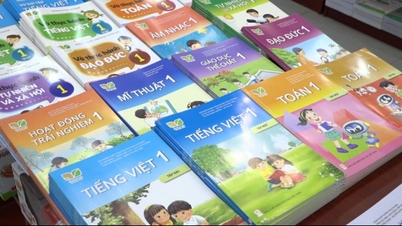



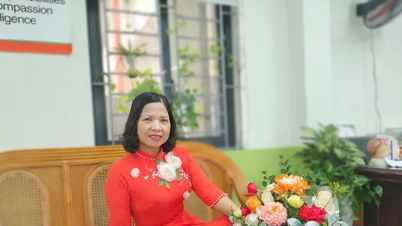






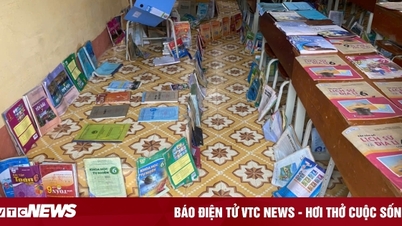



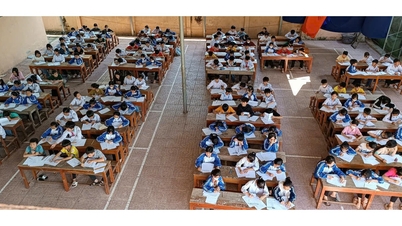








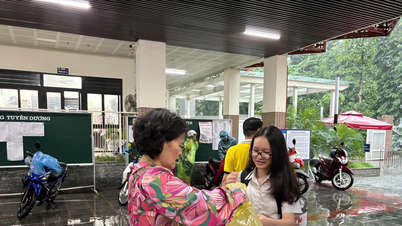



























![[VIDEO] Summary of Petrovietnam's 50th Anniversary Ceremony](https://vphoto.vietnam.vn/thumb/402x226/vietnam/resource/IMAGE/2025/10/4/abe133bdb8114793a16d4fe3e5bd0f12)

![[VIDEO] GENERAL SECRETARY TO LAM AWARDS PETROVIETNAM 8 GOLDEN WORDS: "PIONEER - EXCELLENT - SUSTAINABLE - GLOBAL"](https://vphoto.vietnam.vn/thumb/402x226/vietnam/resource/IMAGE/2025/7/23/c2fdb48863e846cfa9fb8e6ea9cf44e7)





































Comment (0)